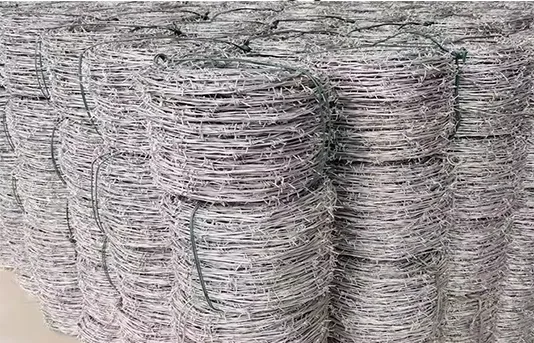-
 Phone:
Phone: -
 Email:
Email:

rock mesh retaining wall
Rock Mesh Retaining Walls A Durable Solution for Slopes and Hillsides
In modern civil engineering and landscape architecture, the demand for effective, sustainable, and aesthetically pleasing retaining walls has increased significantly. Among several options available in the market, rock mesh retaining walls stand out for their unique combination of functionality and environmental compatibility.
What are Rock Mesh Retaining Walls?
Rock mesh retaining walls are structures designed to support soil and prevent erosion on slopes and hillsides. They are constructed using a combination of steel mesh reinforced with natural rock or other aggregate materials. This innovative approach allows the wall to blend seamlessly into the natural environment while providing robust support against lateral earth pressure.
The steel mesh provides structural integrity, allowing the wall to withstand the forces exerted by the soil it retains. The rocks fill the voids in the mesh, contributing to the wall’s weight, stability, and drainage. This combination creates a flexible wall that can adapt to minor ground movements, which is particularly beneficial in areas prone to earthquakes or landslides.
Benefits of Rock Mesh Retaining Walls
1. Environmental Sustainability One of the major advantages of rock mesh retaining walls is their environmental sustainability. The materials used, typically local stone and steel, minimize the carbon footprint associated with transportation and manufacturing. Additionally, the design promotes natural drainage, reducing the risk of water accumulation behind the wall, which can lead to erosion and structural failure.
2. Aesthetic Appeal Unlike traditional concrete retaining walls, which can appear stark and industrial, rock mesh walls blend more naturally into the surrounding landscape. The use of natural stone allows for diverse aesthetic possibilities, making it easy to choose materials that complement the local environment. This quality makes them ideal for residential projects, parks, and other landscaping applications.
rock mesh retaining wall

3. Versatility Rock mesh retaining walls are highly versatile and can be utilized in various applications. They are suitable for both small-scale residential projects and larger commercial developments. Additionally, they can be employed in a range of terrain types, including steep slopes, riverbanks, and coastal areas, making them a practical choice for diverse landscapes.
4. Cost-Effectiveness Although the initial investment in rock mesh retaining walls can be higher than traditional options, their long-term cost-effectiveness cannot be overlooked. Their design allows for less intensive excavation and a reduced need for expensive drainage systems. With proper installation, these walls can last for decades without requiring significant maintenance, thereby lowering overall project costs.
5. Enhanced Stability and Safety The combination of the rock and mesh allows for effective stress distribution, minimizing the risk of wall failure. This is particularly important in areas with loose or highly saturated soils where landslides are a concern. The ability of rock mesh walls to handle minor soil movements further enhances their reliability and safety.
Installation Process
The installation of rock mesh retaining walls involves several key steps. First, a thorough site assessment is conducted to determine soil conditions and drainage patterns. Once the design is finalized, excavation is performed to create a stable base for the wall. The steel mesh is then erected, followed by the placement of rocks to fill the mesh. Finally, drainage systems may be installed if necessary, ensuring the longevity of the wall.
Conclusion
Rock mesh retaining walls represent a forward-thinking approach to managing slopes and preventing soil erosion. Their sustainability, aesthetic appeal, versatility, cost-effectiveness, and stability make them an attractive option for a wide range of applications. As the construction industry continues to prioritize environmentally-friendly practices, rock mesh retaining walls are poised to become an even more popular choice, striking a balance between functionality and beauty in landscaping and civil engineering projects.
-
Wire Mesh for Every Need: A Practical SolutionNewsJul.25,2025
-
Steel Fences: Durable, Secure, and Stylish OptionsNewsJul.25,2025
-
Roll Top Fencing: A Smart Solution for Safety and SecurityNewsJul.25,2025
-
Cattle Farm Fencing Solutions for Maximum SecurityNewsJul.25,2025
-
Affordable Iron Binding Wire SolutionsNewsJul.25,2025
-
Affordable Galvanized Wire SolutionsNewsJul.25,2025
-
Wire Hanger Recycling IdeasNewsJul.25,2025








